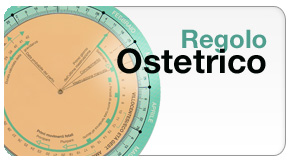
Aplasia tibiale - ectrodattilia OMIM 119100
Aplasia tibiale - ectrodattilia OMIM 119100
E' una malattia rara, ad espressione variabile, che va dall'agenesia bilaterale della tibia con ectrodattilia, emimelia trasversa, a forme più lievi e con sintomi meno evidenti. Possono essere presenti ipoplasia ulnare, mani a chele d'aragosta, biforcazione dei femori.
E' trasmessa come carattere autosomico dominante a penetranza incompleta ma sono state descritte anche forme familiari a trasmissione autosomica recessiva.
Der Kaloustian, V. M., Mnaymneh, W. A. Bilateral tibial aplasia with lobster-claw hands: a rare genetic entity. Acta Paediat. Scand. 62: 77-78, 1973.
Il gene coinvolto è BHLHA9 (basic helix-loop-helix family, member a9).
Bibliografia
Der Kaloustian, V. M., Mnaymneh, W. A. Bilateral tibial aplasia with lobster-claw hands: a rare genetic entity. Acta Paediat. Scand. 62: 77-78, 1973.
Hoyme, H. E., Jones, K. L., Nyhan, W. L., Pauli, R. M., Robinow, M. Autosomal dominant ectrodactyly and absence of long bones of upper or lower limbs: further clinical delineation. J. Pediat. 111: 538-543, 1987.
Majewski, F., Goecke, T., Meinecke, P. Ectrodactyly and absence (hypoplasia) of the tibia: are there dominant and recessive types? Am. J. Med. Genet. 63: 185-189, 1996.
Majewski, F., Kuster, W., ter Haar, B., Goecke, T. Aplasia of tibia with split-hand/split-foot deformity: report of six families with 35 cases and considerations about variability and penetrance. Hum. Genet. 70: 136-147, 1985.
Naveed, M., Al-Ali, M. T., Murthy, et al. Ectrodactyly with aplasia of long bones (OMIM; 119100) in a large inbred Arab family with an apparent autosomal dominant inheritance and reduced penetrance: clinical and genetic analysis. Am. J. Med. Genet. 140A: 1440-1446, 2006.
Sener, R. N., Isikan, E., Diren, H. B., Sayli, B. S., Sener, F. Bilateral split-hand with bilateral tibial aplasia. Pediat. Radiol. 19: 258-260, 1989.
Witters, I., Devriendt, K., Moerman, et al.Bilateral tibial agenesis with ectrodactyly (OMIM 119100): further evidence for autosomal recessive inheritance. Am. J. Med. Genet. 104: 209-213, 2001.
Aggiornamenti
- Patologie Genetiche dello Scheletro
Sono elencate tutte le 436 Displasie Scheletriche con la... - Consigli per l'utilizzo del software diagnosi in Diagnosi...
Consigli per l'utilizzo del software diagnosi in Diagnosi... - TERMINI DI USO DEL PORTALE WEB med2000eco e Software...
TERMINI DI USO DEL PORTALE WEB med2000eco e Software...
